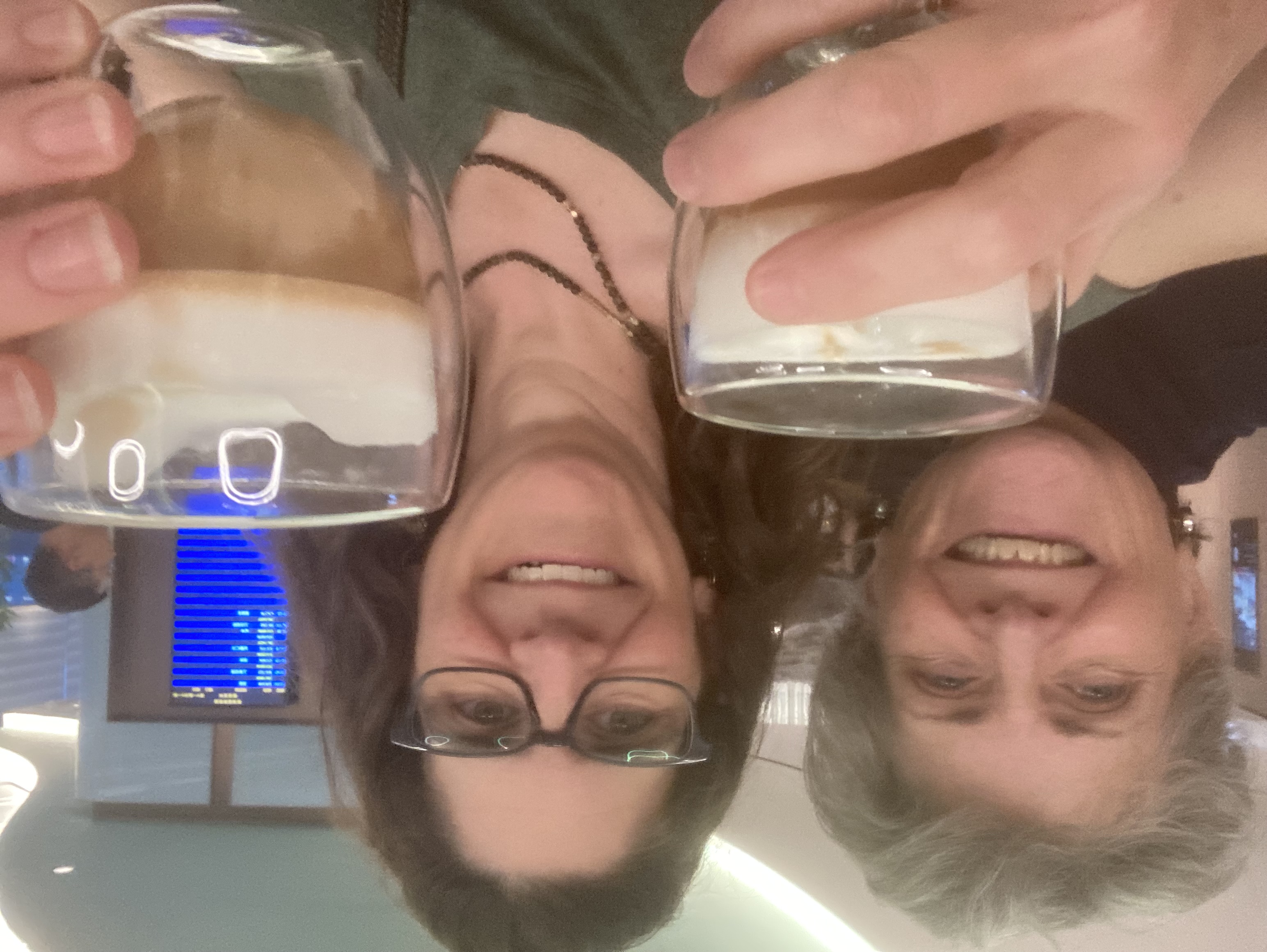
Airport lounge cappucino
So I know I just got done writing about our week in Italy, but I’m now in Japan. Due to poor planning and the fact that our school’s “April” break stretched ridiculously to 5/4, I had about 26 hours between getting home from the first trip and leaving for the airport (again) for the second one.
This time I’m traveling with a group I recently joined
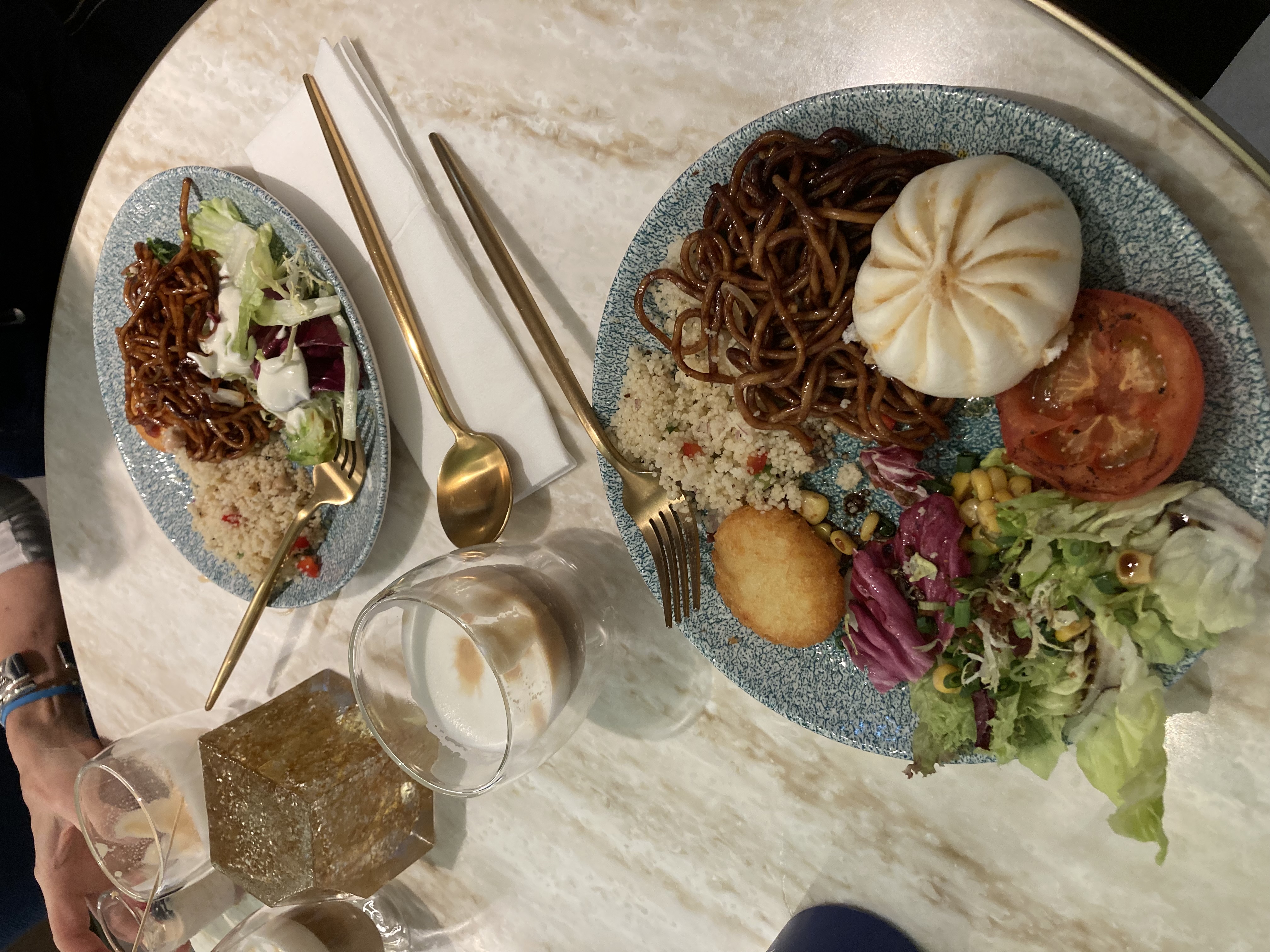
Airport lounge brunch
called Friendship Force. It’s a sort of travel exchange program, and I’m here in Japan with nine other members of the NH Seacoast chapter, and two ladies from Florida. We’ll be hosted by Japanese clubs in Nara and Tokyo, but we planned a three-day pre-trip to see Kyoto first. So for the moment, we’re regular tourists here. I’m rooming with my new friend Margaret, retired librarian of Moharimet School.
Our trip out involved a 15-hour flight to Hong Kong (over the North Pole!) and then a four-hour flight to Osaka. We left Boston at 1:40 am, and for mysterious reasons were promptly
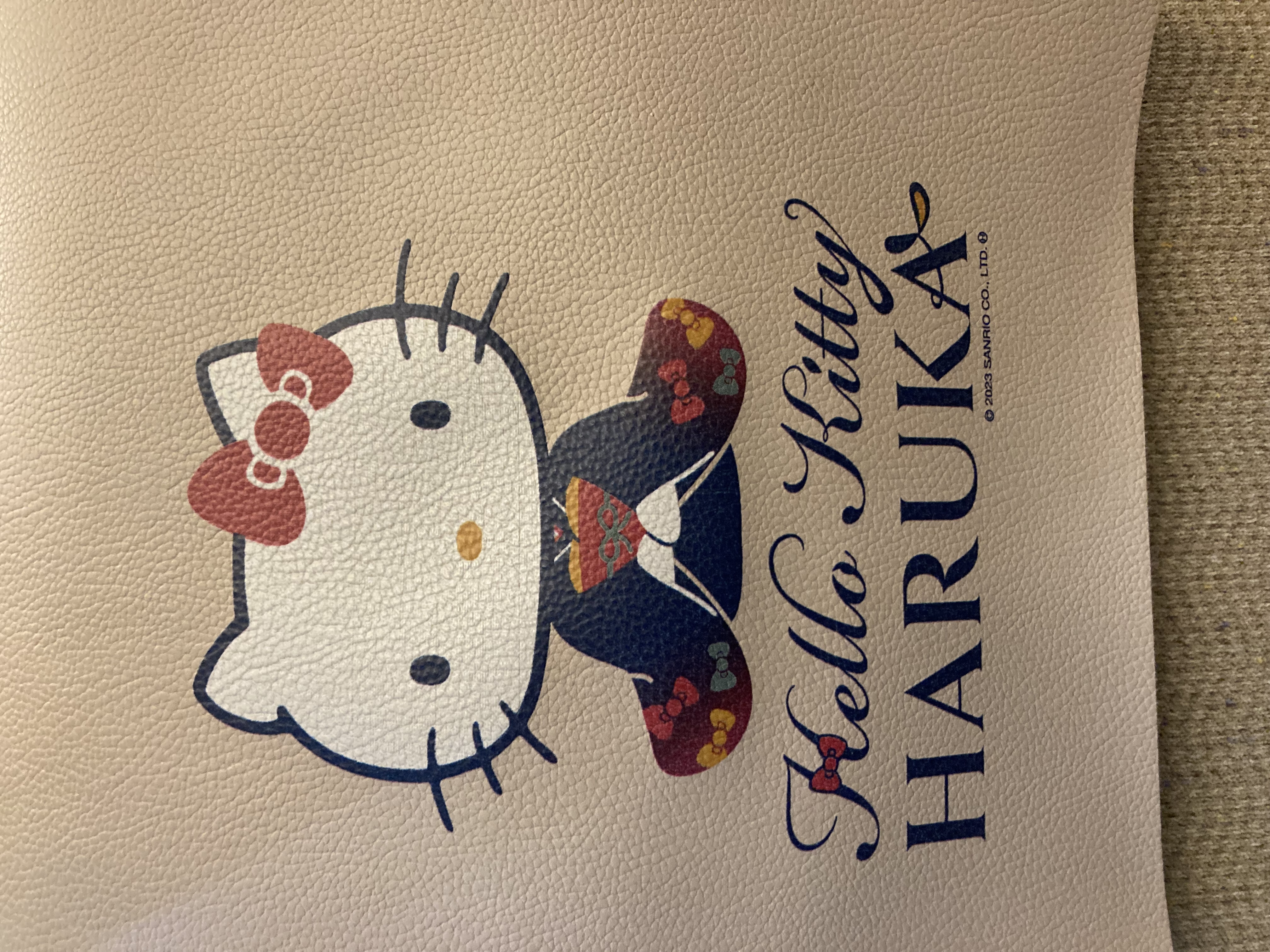
Our train to Kyoto was a Hello Kitty express
served dinner. Between the long flights and the 14-hour time change, we lost a whole day (resulting in me, through no fault of my own, losing my Wordle streak). The highlight of the trip was the airport lounge in Hong Kong — -Margaret and I enjoyed a fresh fruit smoothie of the day, a delicious meal, and a very nice bathroom. (This had the added benefit of allowing me to decline the not-very-good meal we were served on the next flight.) The lowlight was going through Customs in Japan, which had a line that made Disney World look like nothing. We thought our trip through US Customs at
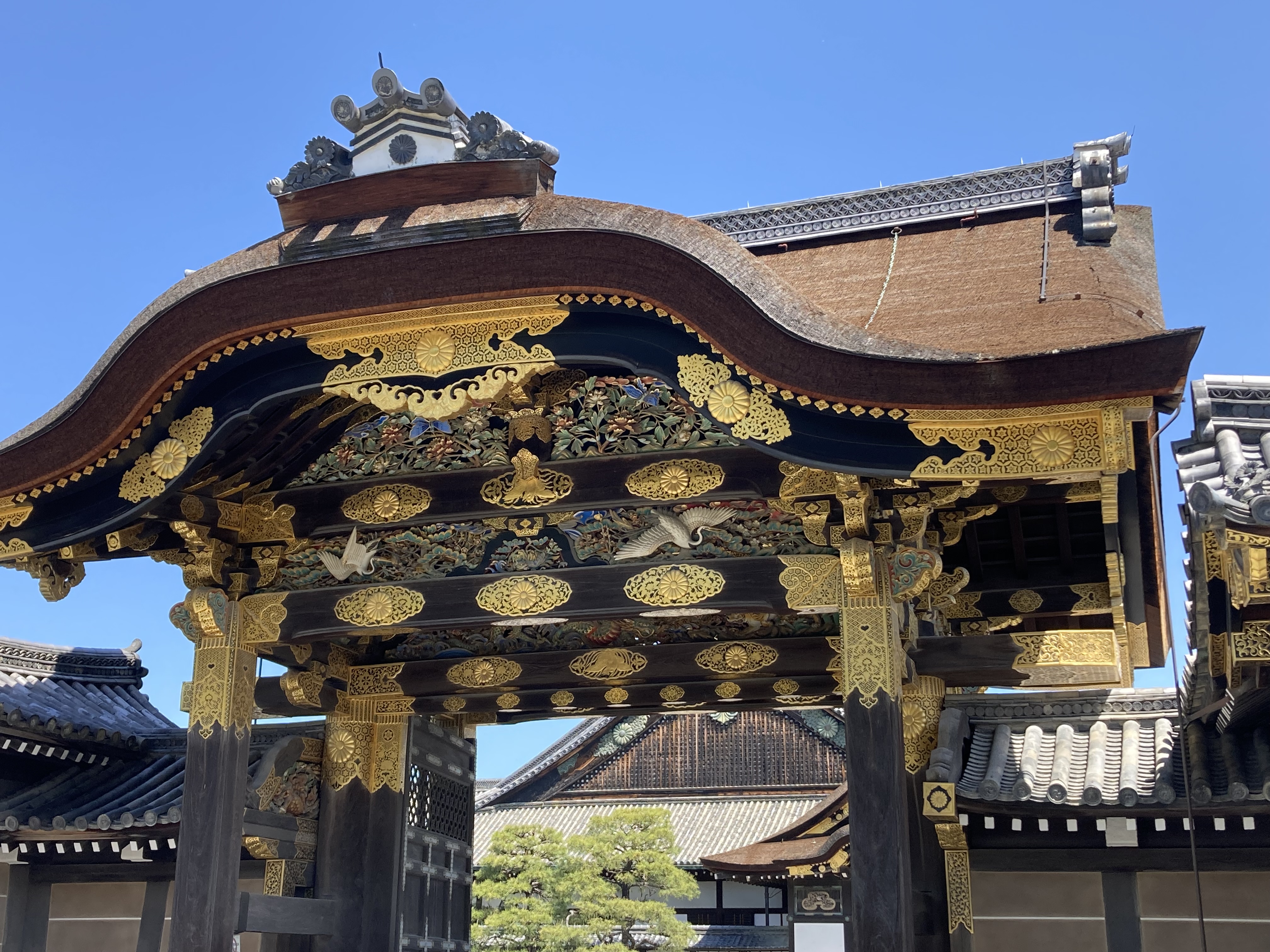
Nijo-Jo Castle gate
Logan was bad when we came back from Italy, but it was nothing to the Japanese version. I counted a total of seven steps/lines that we had to go through, right up till the end when a sprightly, non-English-speaking Japanese customs agent ran off with my suitcase (to put it through the metal detector again, apparently).
Anyway, we managed to get through the airport and onto a train to Kyoto, and from there onto a shuttle to
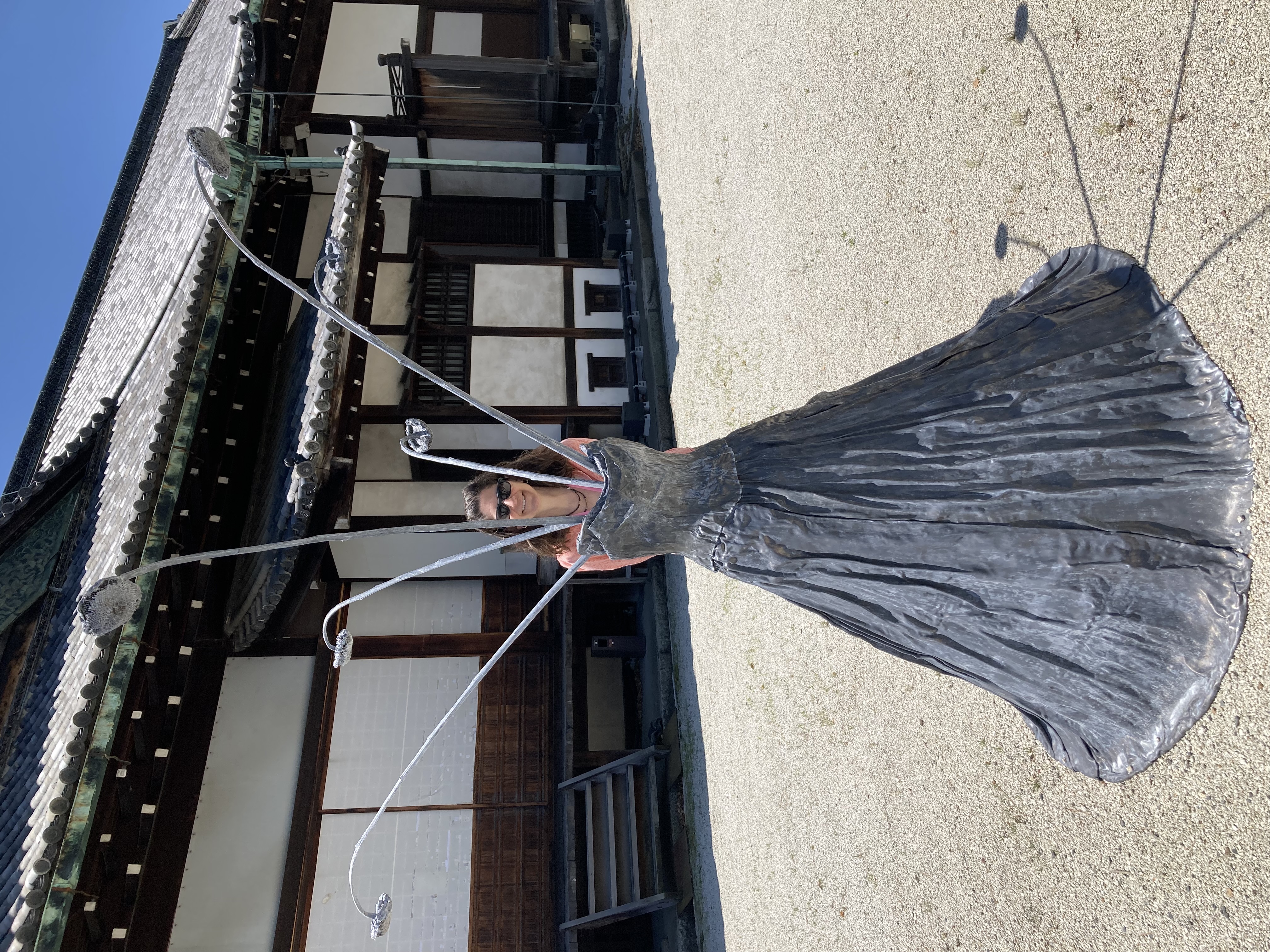
Art exhibition (oddly, German) at the castle
our hotel. It’s a pretty nice place featuring amenties such as a heated toilet seat and a shoe dryer. We managed to stay awake long enough to get to a nearby restaurant for noodle bowls before getting into bed around 7 pm (having been awake god knows how long).
For our first real day in Japan, we planned a visit to Nijo-Jo Castle, which is conveniently right across the street from our hotel. We thought we might have trouble getting up in time for the 10am tour that we’d booked, but fortunately sleeping 7pm – 7am proved to be fairly refreshing and we ended up with plenty of time. Margaret and I even ventured out to breakfast — at a nearby 7-11. We’ve heard that convenience stores are much nicer and have pretty good food here, and we’d both read a Japanese book called Convenience Store Woman that made us eager to check out the scene. And we can report that the rumors are true. I had something very tasty that resembled a hash brown. Margaret is vegetarian and had fewer options, but she managed to find sufficient snacks to keep her going. We both approved of the latte.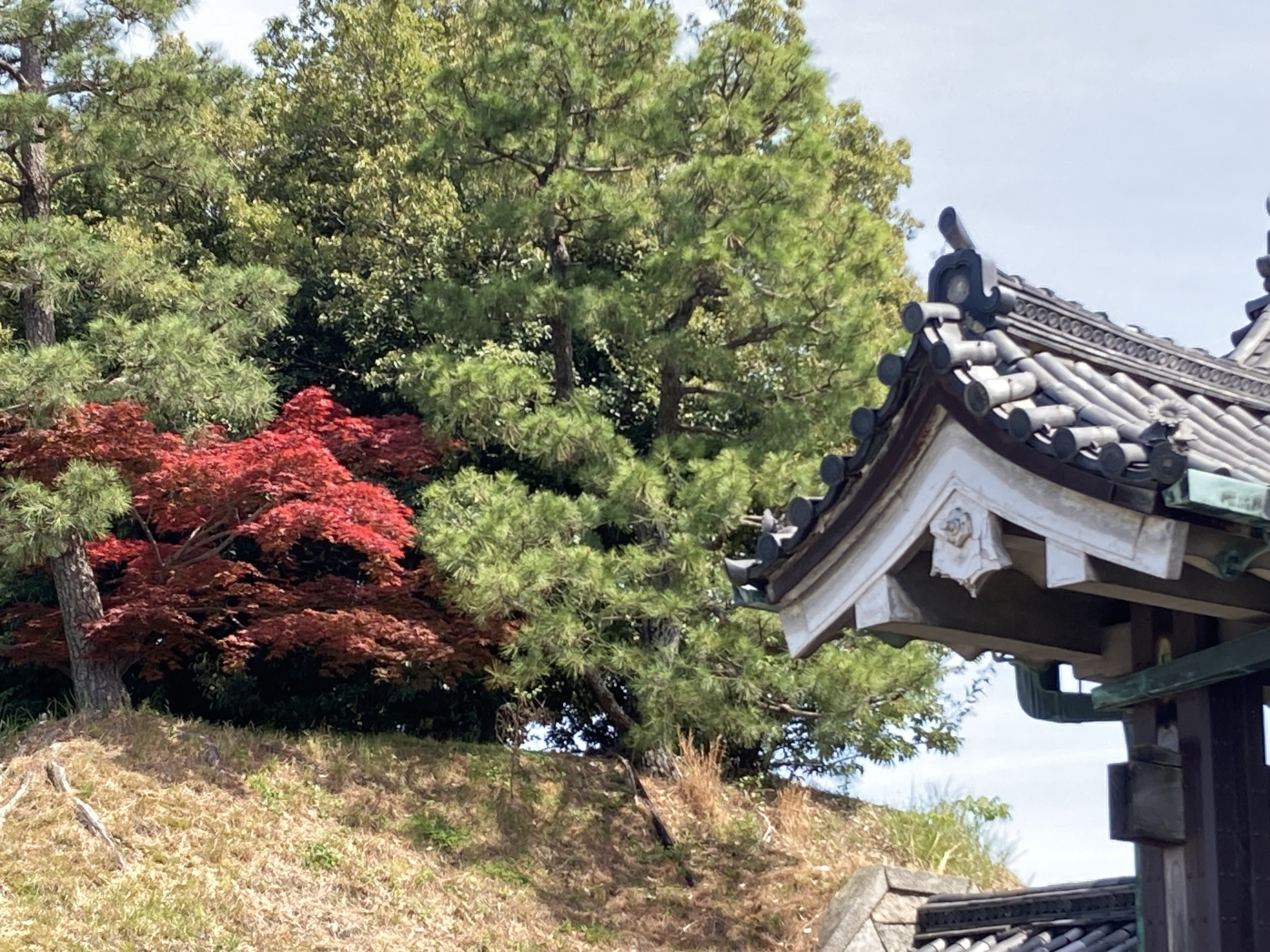
The castle and surrounding grounds were lovely. Our guide told us all about the history of the Shogun regime that constructed and defended it, and its eventual transfer to the Imperial family. It was a very interesting contrast with the lavish palaces that we’d seen in Italy. Nijo-Jo was lavish in its own way, with much simpler and smaller rooms but elaborately painted with gold. There was a great deal of thought given to symbolism — what was painted in each room, the level of the ceiling and the floor, and various other factors all held hidden meanings related to status and power. I was intrigued by the 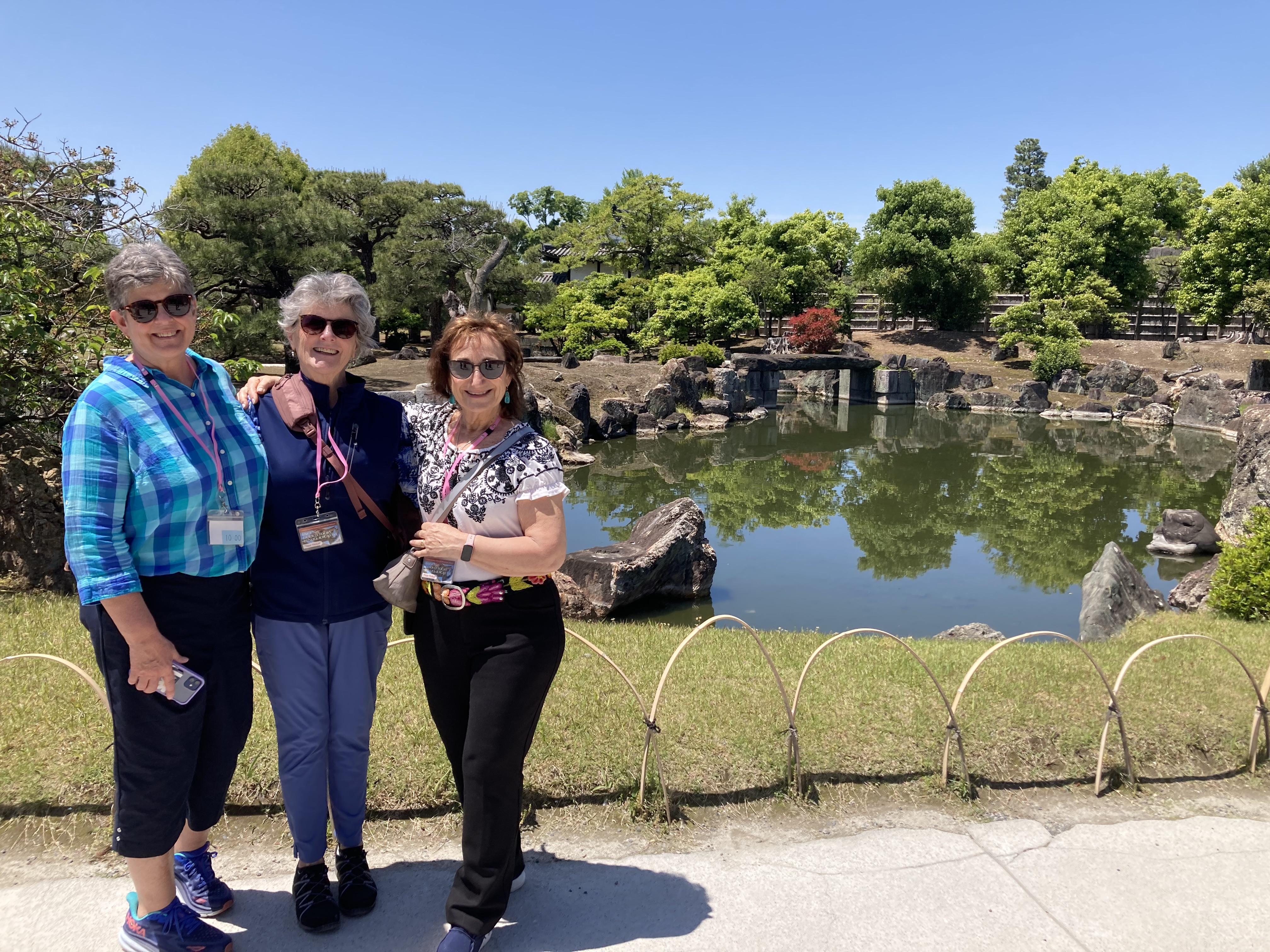 Japanese philosophy of making rooms multi-functional. When you wanted to do something in a room — say, eat dinner — furnishings like a table would be brought in from a storage room. After use, they’d be put back, leaving the room empty for another use.
Japanese philosophy of making rooms multi-functional. When you wanted to do something in a room — say, eat dinner — furnishings like a table would be brought in from a storage room. After use, they’d be put back, leaving the room empty for another use.
We had another tour booked in the afternoon for the Honmaru Palace within the same grounds, having planned to have lunch in between. We were foiled by being told that we weren’t allowed to leave and re-enter, so instead of a real lunch we had to content ourselves with a snack from the castle cafe, which mosty consisted of ice cream (which was literally gold-plated, and consequently quite expensive).
expensive).
After enjoying the complex’s beautiful gardens for a while, we made our way across the moat to the Honmaru Palace. It was surrounded by high stone walls of incredible workmanship. Giant stone bricks had been assembled to make the wall, and though they were somewhat irregularly shaped the corners of the wall were a perfect knife’s edge. The palace itself was also beautiful — we removed our shoes and walked down halls carpeted with tatami mats (the smell of which instantly brought me back to beach trips in the 80s, where we’d purchase  bamboo mats to lay our towels on). The palace’s painting and wallpaper were gorgeous, and the atmosphere was quiet and calm since the number of visitors at a time is strictly limited.
bamboo mats to lay our towels on). The palace’s painting and wallpaper were gorgeous, and the atmosphere was quiet and calm since the number of visitors at a time is strictly limited.
After a brief afternoon rest, we had one more activity for the day — an evening guided tour of the Gion District, famous for geishas. We learned a lot about the geisha lifestyle, including that it actually doesn’t involve any form of prostitution. (Apparently Memoir of a Geisha was a lie.) We walked past the geisha schools and heard about the grueling 5-year program that they have to follow to become a geisha (and the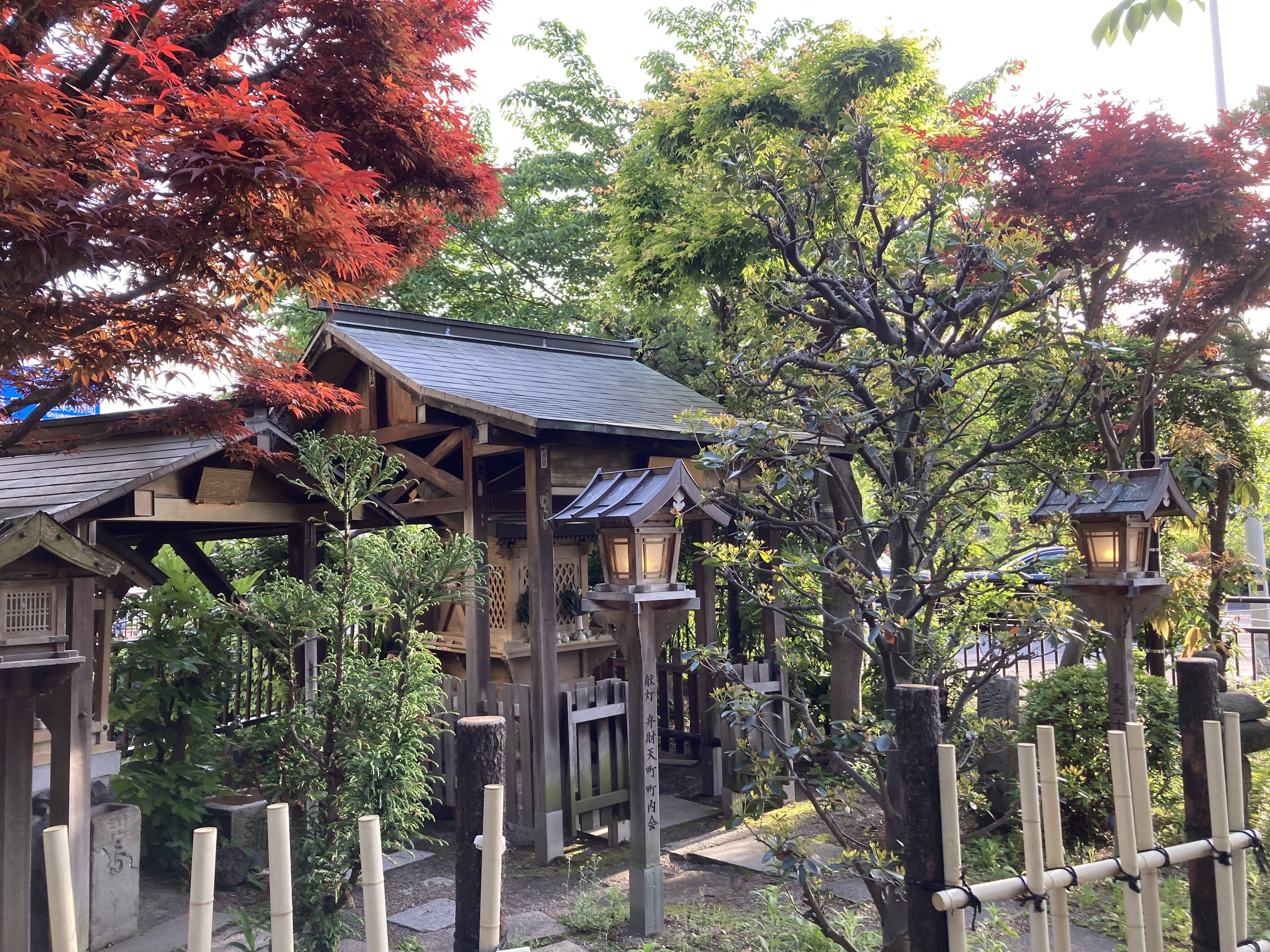 large amounts of money that they make afterwards). Some interesting factoids: (1) Geishas in training have to wear their hair a specific way that takes several hours of styling, so they can only get it done once a week. To preserve the hair they have to sleep on these special tiny pillows that looked extremely uncomfortable. (2) Kimono worn by geishas are hand-made and cost $30,000-$60,000 apiece. (3) Men can be geishas, but not in Kyoto. Foreigners can also be geisha, but must be fluent in Japanese. (I think Margaret is considering a second career.) We only caught sight of one actual geisha, sitting in a cab, but the walk through narrow, old fashioned streets and along the river was charming regardless.
large amounts of money that they make afterwards). Some interesting factoids: (1) Geishas in training have to wear their hair a specific way that takes several hours of styling, so they can only get it done once a week. To preserve the hair they have to sleep on these special tiny pillows that looked extremely uncomfortable. (2) Kimono worn by geishas are hand-made and cost $30,000-$60,000 apiece. (3) Men can be geishas, but not in Kyoto. Foreigners can also be geisha, but must be fluent in Japanese. (I think Margaret is considering a second career.) We only caught sight of one actual geisha, sitting in a cab, but the walk through narrow, old fashioned streets and along the river was charming regardless.
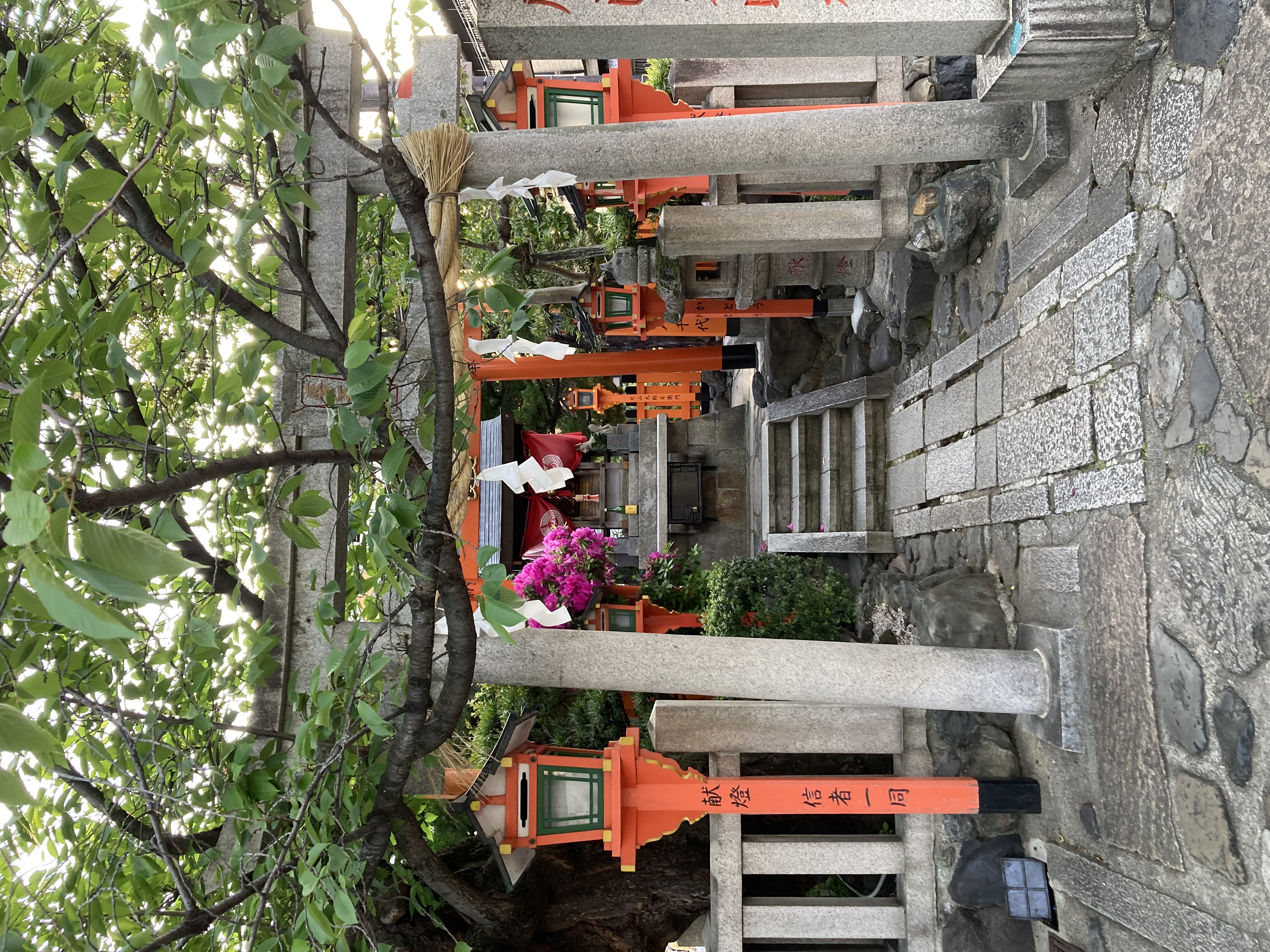
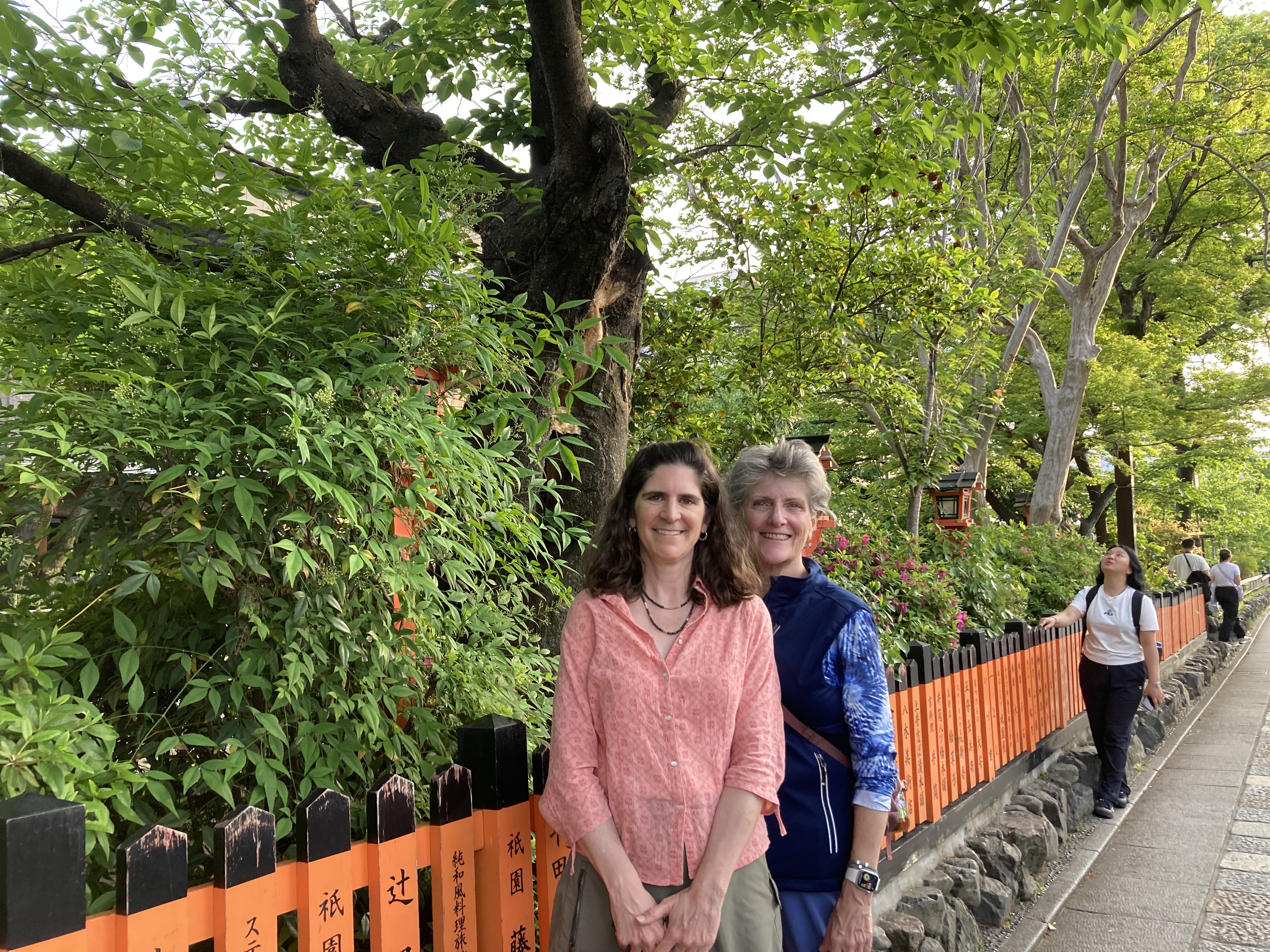 After the tour we had to find dinner, and this proved a bit of a challenge. Margaret and I, in search of vegetarian food for her, ended up at a vegan restaurant. It was extremely tiny — 8 seats total along a bar, with the kitchen right behind. I think the whole place was smaller than our hotel room. It was populated almost entirely with Westerners — I don’t
After the tour we had to find dinner, and this proved a bit of a challenge. Margaret and I, in search of vegetarian food for her, ended up at a vegan restaurant. It was extremely tiny — 8 seats total along a bar, with the kitchen right behind. I think the whole place was smaller than our hotel room. It was populated almost entirely with Westerners — I don’t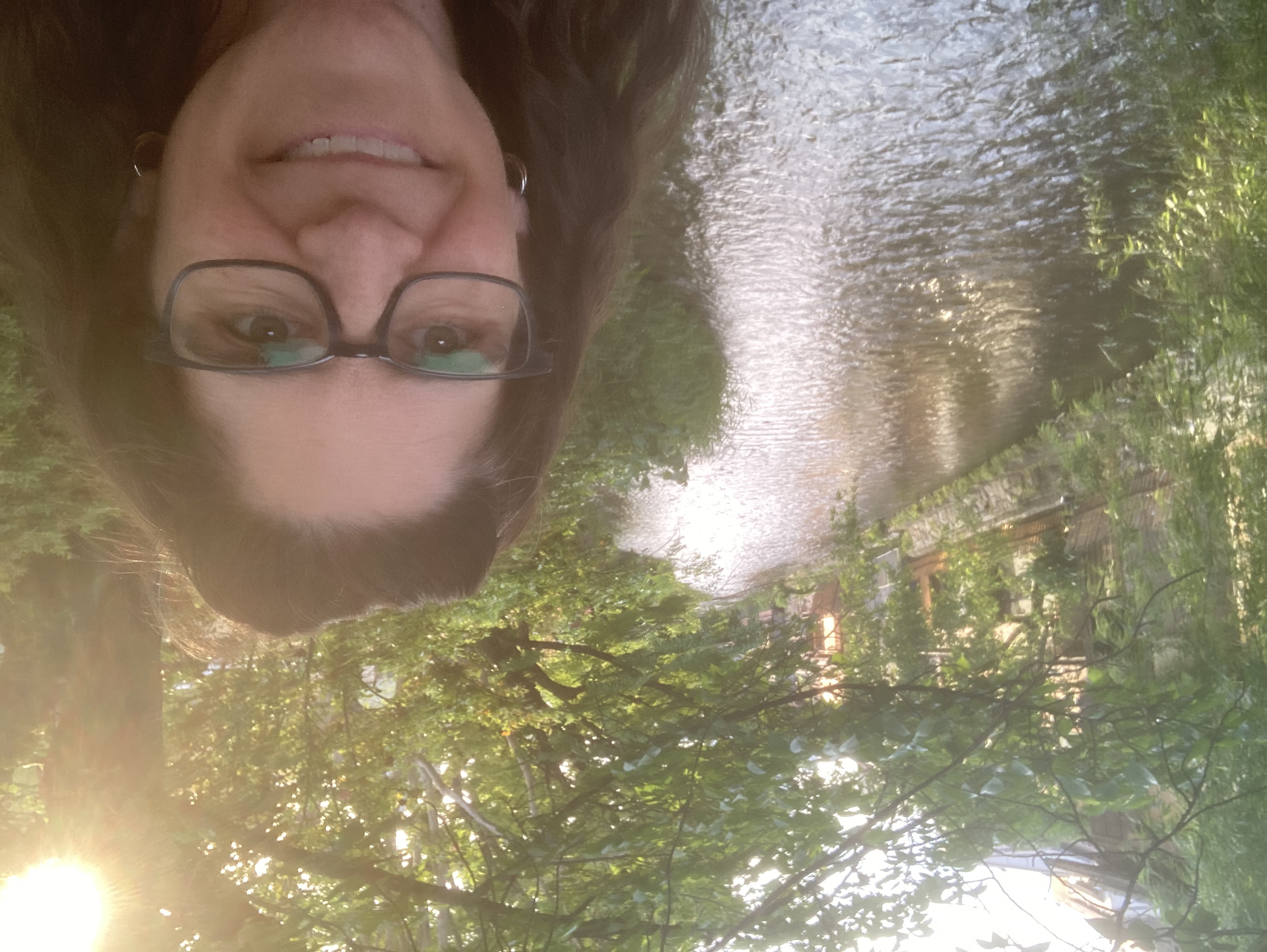 think the Japanese are big on veganism — except for this one slightly drunk Japanese gentleman who hit on Margaret. (His opening line was “You and me — same age!”, which didn’t really get things off on the right foot, since he turned out to be about 80.) The food was amazing and the two women running the place were friendly and kind. It was a very memorable experience.
think the Japanese are big on veganism — except for this one slightly drunk Japanese gentleman who hit on Margaret. (His opening line was “You and me — same age!”, which didn’t really get things off on the right foot, since he turned out to be about 80.) The food was amazing and the two women running the place were friendly and kind. It was a very memorable experience.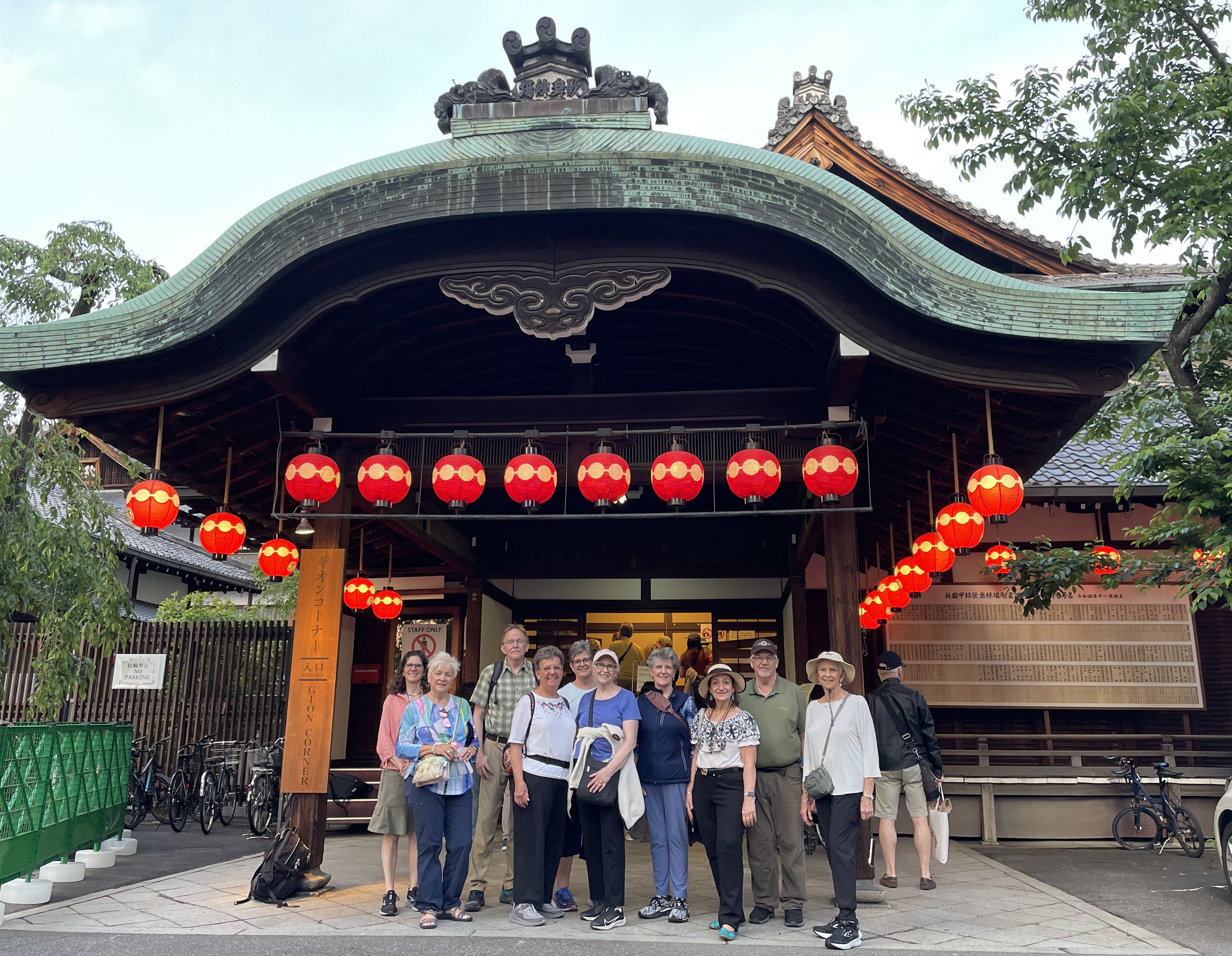
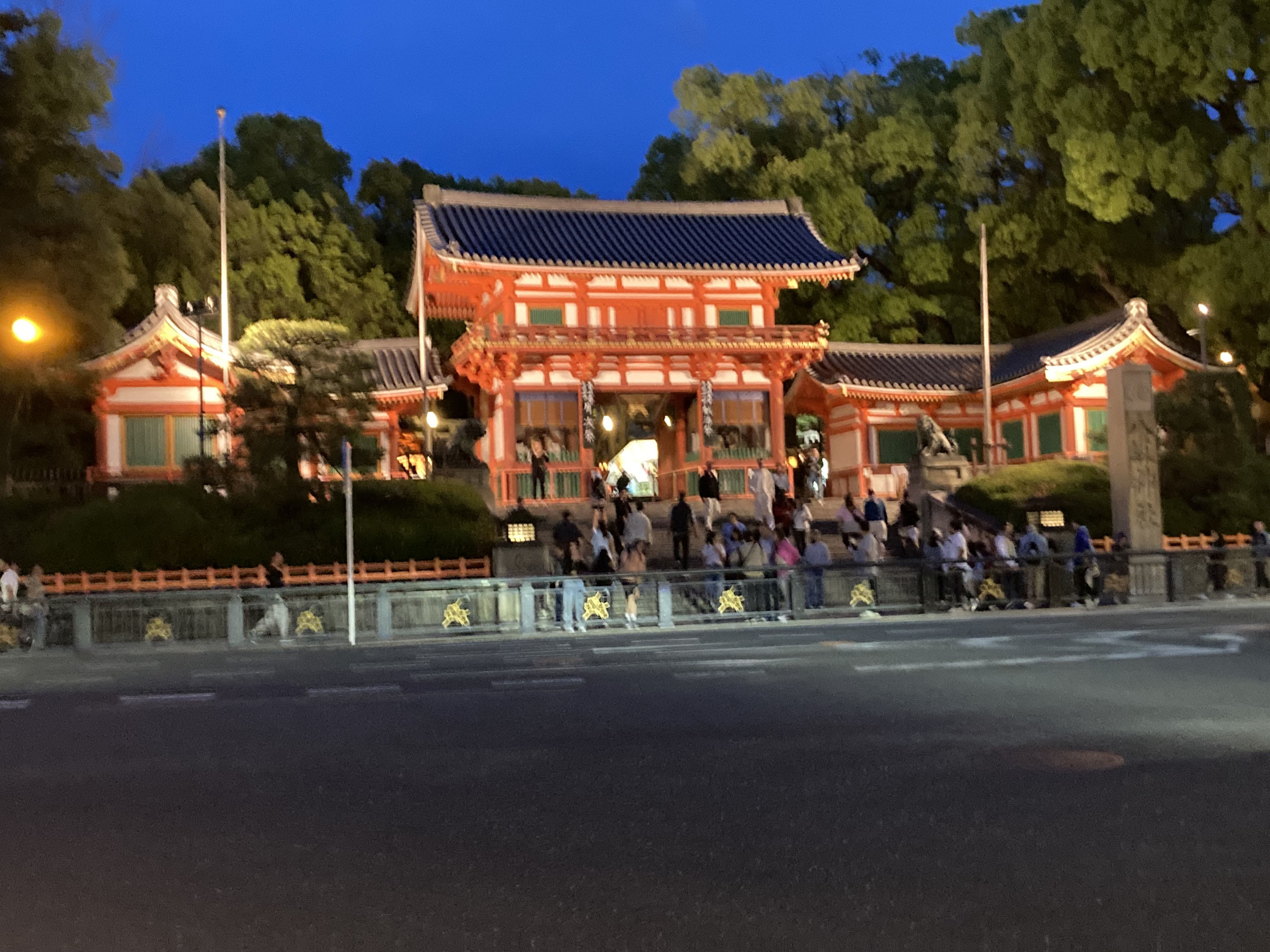
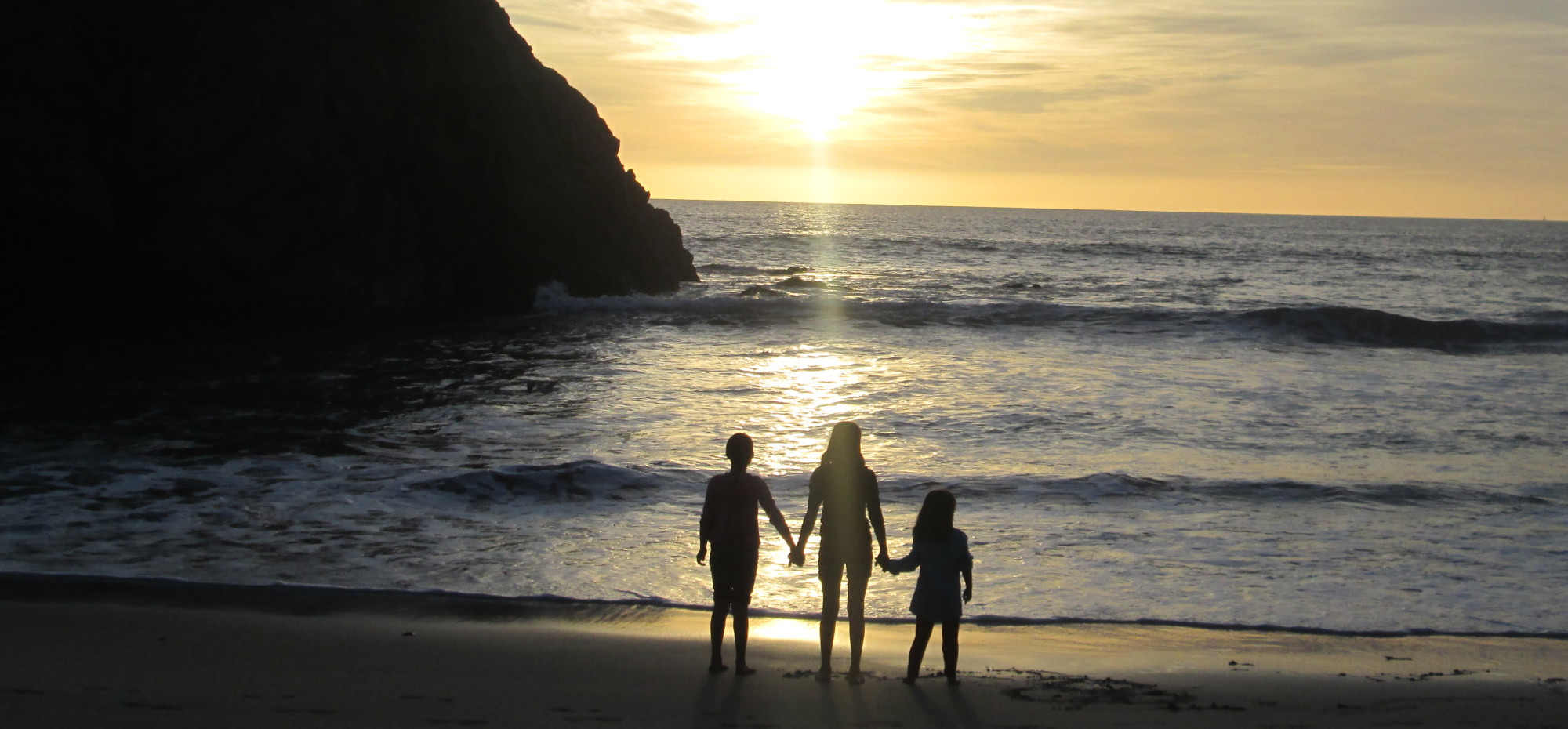
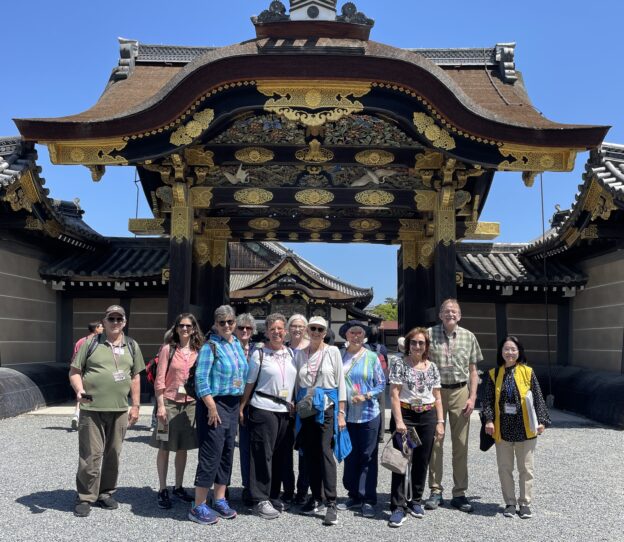
You’re certainly having different experiences. Your grandfather loved Japanese houses because they had empty rooms so had no clutter.